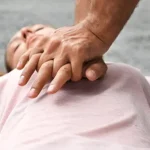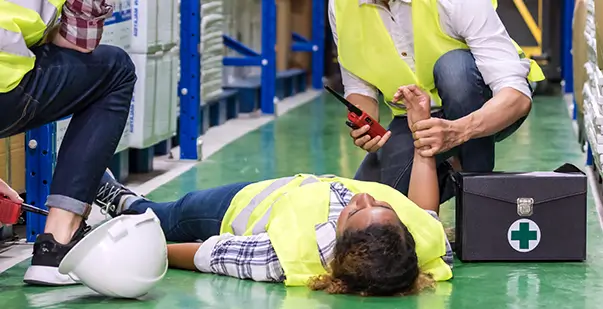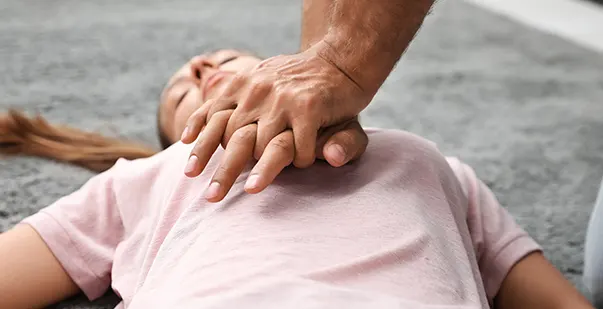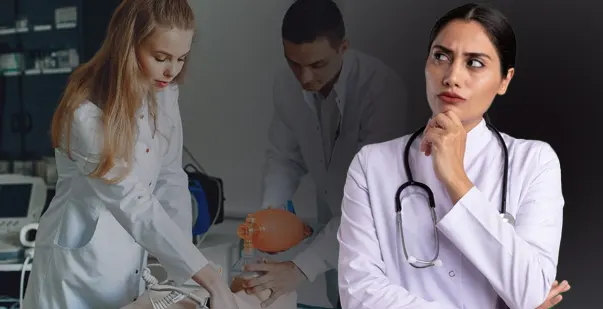Imagine a rainy day when you and your friends are playing football. You were having a great time until you went for a tackle and landed awkwardly on your side. You felt a sharp pain in your ribs, and you knew right away that something was wrong. You suspected that you had fractured one of your ribs. Immediately, your friends helped you with some basic first-aid for cracked ribs that they knew. You then realized that it is important to know basic first aid skills in case you ever find yourself in a situation like this.
Emergencies don’t come with a warning. If you want to stay prepared for any emergencies, it is important to obtain a certification in first-aid. You can register for the First Aid Online Training Course offered by American HealthCare Academy right away! You can learn at your own pace, and for any query, you can get in touch with AHCA at 1-888-277-7865.
Symptoms of Cracked Ribs
Cracked ribs are a type of rib fracture that is caused by a blow to the chest that causes the bone to partially break. The symptoms of a cracked rib can vary depending on the severity of the fracture, but they typically include:
- Sharp pain in the chest area, especially when breathing in.
- Swelling or tenderness around the affected ribs.
- Sometimes bruising on the skin.
- You may feel or hear a crack when your rib breaks
- Trouble breathing.
- Shortness of breath.
- Pain in the shoulder or back.
- Coughing up blood.
If you experience any of the following symptoms, it is important to seek medical attention to get a diagnosis and treatment plan. Cracked ribs get healed within 6 weeks in most cases. However, some complications can occur, such as pneumonia or a lung collapse. Here are some tips to help relieve the pain and discomfort of a cracked rib:
- Rest: Avoid strenuous activity until the pain has subsided.
- Ice therapy: Apply a cold compress to the affected area for 20 minutes at a time, 3-4 times per day.
- Over-the-counter pain relievers: Take ibuprofen or acetaminophen as directed.
- Pain medication prescribed by your doctor: If the pain is severe, your doctor may prescribe stronger pain medication.
- Breathing exercises: These can help to open up your lungs and make it easier to breathe.
- Elevate your head and chest: This can help to reduce pain and pressure in your chest.
When to Seek Medical Attention?
Here are some signs and symptoms that you should seek medical attention for a cracked rib:
- Shortness of breath
- Trouble breathing
- Pain in the shoulder or back
- Coughing up blood
- Fever
- Pain that is so intense that it cannot be managed with over-the-counter pain relievers.
- Increasing pain or swelling
- Bruising that is spreading
If you are experiencing any of the following symptoms, it is essential to seek medical attention immediately. A cracked rib can be a serious injury, and it is important to get treatment as soon as possible to prevent complications.
First Aid for Cracked Ribs
- Assess the scene: Assess your surroundings and call for help if necessary. If the person is unconscious or has difficulty breathing, call 911 or your local emergency number immediately.
- Check for any other injuries: If the person has any other injuries, such as a head injury or a spinal cord injury, do not move them unless it is necessary.
- Comfort the person and try to keep them calm: The pain from a cracked rib can be severe, so it is important to try to keep the person calm and relaxed.
- Apply ice to the affected area: Ice can help to reduce pain and swelling. Wrap the ice in a towel and apply it to the affected area for 20 minutes at a time.
- Elevate the person’s head and chest: This can help to reduce pain and pressure in the chest.
- Monitor the person’s breathing: If the person has difficulty breathing, call 911 or your local emergency number immediately. Once the person is in a safe place and their pain is under control, you can take them to the doctor for further evaluation.
Here are some additional tips for first aid for cracked ribs:
- Do not give the person any blood thinners.
- Do not allow the person to smoke. Smoking can irritate the lungs and make it more difficult to breathe.
- Encourage the person to take deep breaths and cough. This will help to keep the lungs clear and prevent pneumonia.
- Help the person to get comfortable and rest. This will help the ribs to heal more quickly.
- Most people with broken ribs fully recover within six weeks with proper first aid and care.
Aftercare for Cracked Ribs
Aftercare for cracked ribs is important to help the bones heal properly. This includes:
- Rest: It is important to rest and avoid strenuous activities until the ribs have healed.
- Pain management: Your doctor may prescribe pain medication to help you manage the pain.
- Activity restrictions: Your doctor may recommend that you avoid certain activities, such as lifting heavy objects or coughing.
- Follow-up care: It is important to follow up with your doctor to make sure that the ribs are healing properly.
Tips for Preventing Cracked Ribs
There are a few things that you can do to help prevent cracked ribs:
- Fasten your seatbelt while driving.
- Use proper lifting techniques when you are moving heavy objects.
- Be aware of your surroundings and avoid activities that could put you at risk of a fall.
Conclusion
Cracked ribs can be painful and take longer to recover. However, by following the first aid and aftercare tips outlined in this blog, you can help the ribs heal properly and reduce your discomfort. The American HealthCare Academy offers a wide range of courses to choose from, including ones designed especially for First Aid Emergencies, you can get a hands-on course and be prepared for emergencies!













